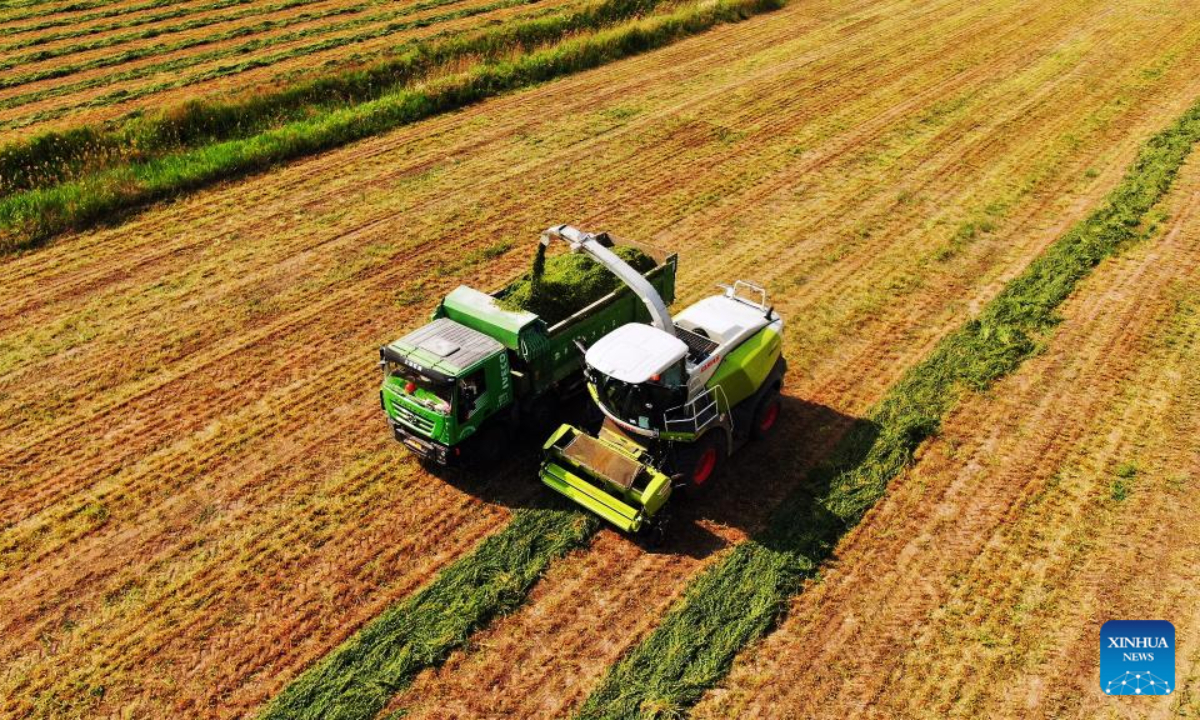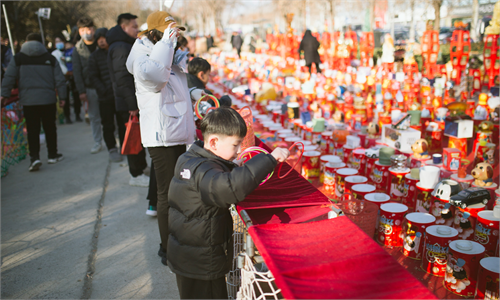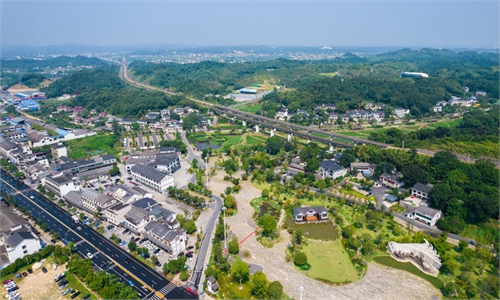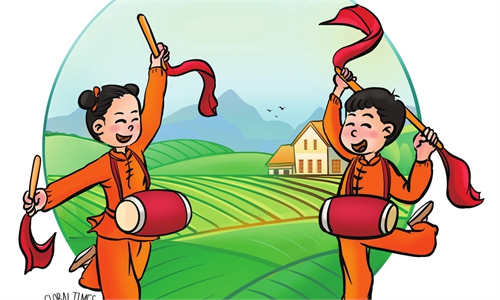China vows to push rural vitalization comprehensively with launch of No.1 central document for 2023

This aerial photo shows workers of Shandong Lvfeng Agriculture Group Co., Ltd. harvesting grass in Wudi County, east China's Shandong Province. Photo:Xinhua
China published a key policy document known as the "No.1 central document" for 2023 on Monday evening, in which the world's second largest economy underlined its determination to "comprehensively push" rural vitalization with joint efforts of the Communist Party of China and the whole society, as well as speed up achieving rural modernization.The document also introduced nine aspects of work on achieving the goals including securing agricultural supplies/production and strengthening rural infrastructure construction, an extension of last year's missions but also presenting new highlights.
According to the document, it is necessary to unremittingly consider solving the "agriculture, rural areas and farmers" problems as the top priority of the whole Party's work, and give full play to the efforts of the whole Party and society to comprehensively promote rural vitalization and accelerate modernization of agriculture and rural areas.
With the accelerated evolution of global changes of a scale unseen in a century, China's development has entered a period of coexistence of strategic opportunities, risks and challenges, with increasing uncertainties and unpredictable factors, it is extremely important to maintain the bedrock of "agriculture, rural areas and farmers" and does not allow for any mistake, the document said.
Li Guoxiang, a research fellow at the Chinese Academy of Social Sciences, said that the document's emphasis on the importance of modernizing agriculture and rural areas echoes with the far-reaching development blueprint laid out by the 20th CPC National Congress report, which pointed out that "the most challenging and arduous tasks we face in building a modern socialist China in all respects remain in our rural areas."
"China faces a number of grim challenges in rural revitalization, such as lack of talent and rural aging issues. The No.1 document is a booster of confidence and an institutional guarantee that could mobilize the strength of the Party and the society toward a common goal," Li said.
Securing food security
According to Li, most of the policy priorities listed in this year's No.1 central document are a continuance of last year's, mirroring a high degree of pragmatism and efficiency which will be easier for the localities to facilitate relevant work.
This year's document listed nine aspects of key work that China will undertake in 2023 to push rural revitalization. The first mission is securing grain and important agricultural products' supplies and stable production, a reflection of the government's continued emphasis on food security in line with long-term strategy.
Specifically, China will guarantee a total of more than 650 billion kilograms of grain output in 2023, Xinhua said.
In last year's No.1 central document, China vowed to ensure food security by holding the people's rice bowl firmly in its own hands.
According to Li, the importance of stabilizing agricultural production and ensuring supply has been elevated to "an unprecedented strategic position" in this year's No.1 document, as well as last year's, amid more unexpected natural disasters.
The country's strengthening call for food security also came at a time when geopolitical tensions flared up across the world with military conflicts breaking out between Russia and Ukraine, while US-led protectionism has little signs of abating.
In 2022, China produced 687 million tons of grain, up 3.68 million tons compared with the previous year, data revealed by the National Bureau of Statistics showed.
Grain security is a bottom line both for economic development and people's livelihoods, which must not go wrong, Hu Qimu, deputy secretary general of digital-real economies integration forum 50, told the Global Times on Monday.
It is expected that this notion will be raised repeatedly as one of the priorities of China's development pattern to balance development with security, Hu said.
Key missions
In this year's No.1 central document, the government also stressed a number of missions to push rural vitalization, such as strengthening agricultural infrastructure construction and consolidating support of agricultural science, technology and equipment, something which officials touched on in last year's document but didn't emphasize that strongly.
In particular, officials are looking to build an agricultural science and technology innovation system with clear tier, division of labor/cooperation and moderate competition to accelerate breakthroughs in cutting-edge technologies, the document showed.
The document also said that China will support the construction of national laboratories, manufacturing innovation centers and other platforms in the field of agriculture, as well as improve the stable support mechanism for basic
research in agricultural science and technology.
According to Hu, China's proportion of primary industry will decline compared with the secondary and tertiary industries, and therefore the agricultural industry must be transformed and upgraded to be more efficient, smart and collective to meet with this trend.
Tian Yun, a Beijing-based economist told the Global Times on Monday that China's production expansion needs to rely more on the improvement of scientific and technological content.
"The current population structure or labor force structure of China determines that the agricultural modernization will rely more on mechanical equipment to replace the labor force and fine work supported by information and intelligence to improve the yield and quality of food," he noted.
Besides, the document said China will keep the bottom line of preventing a large-scale return to impoverishment, accelerate the construction of an agricultural powerhouse, as well as broaden the channels for farmers to increase income.
Experts also stressed that China's rural modernization has its own traits instead of blindly following the pattern of Western countries.
"The foundation of the Chinese modernization of agriculture and rural areas is to consolidate and improve the basic rural operation system, develop new rural collective economies and advance reform of the rural land system, and grant farmers more adequate property rights and interests, a divergence from the privatizing ownership of lands in the West," Li said.
"China's rural land system ensures the rights of about 300 million farmers being guaranteed, and safeguards the lawful land rights and interests of rural residents who have moved to urban areas, otherwise they may be expelled from the cities and live in slums after losing their lands - a very common thing in the Western model," Li noted.




